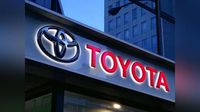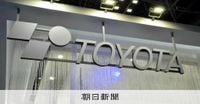Toyota Automatic Loom Works, a key company in the Toyota Group and the historical predecessor of Toyota Motor Corporation, is considering taking the company private. This decision was revealed on April 26, 2025, by a source related to the company, who stated that they are exploring various capital policies.
As part of this potential transition, Toyota and its group companies are contemplating the establishment of a special purpose company (SPC) to facilitate the acquisition of shares from existing shareholders through a tender offer (TOB). This move could significantly reshape the corporate landscape of Toyota Industries, which has a current market capitalization of approximately 4.3 trillion yen, with total acquisition costs potentially exceeding 5 trillion yen when including premiums.
The financial implications of this acquisition are substantial, prompting Toyota's Chairman Akio Toyoda and other founding family members to seek support from major financial institutions, including three megabanks. The need for significant funding has raised questions about the feasibility of this plan, yet the potential benefits of going private could be substantial.
Currently, Toyota Automatic Loom Works holds about 9% of Toyota Motor Corporation's shares, which amounts to roughly 3.8 trillion yen. This interlocking shareholding structure has drawn scrutiny from investors who are advocating for more effective capital utilization and a reevaluation of the company's governance structure. Some shareholders have proposed changes to the board composition and the use of capital, pushing the company to consider a move that could enhance management's operational flexibility.
Founded in 1926 by Sakichi Toyoda, the company has evolved into a major manufacturer of automotive parts and industrial vehicles, headquartered in Kariya City, Aichi Prefecture. It is recognized as the source of Toyota, with its automobile division becoming independent in 1937 to form what is now known as Toyota Motor Corporation.
In recent years, the company has faced increasing pressure from investors to improve capital efficiency, particularly given its substantial shareholdings in both Toyota and other group companies. These cross-shareholdings have been criticized for potentially diminishing capital efficiency, leading to heightened market scrutiny.
On April 25, 2025, it was reported that discussions regarding the privatization of Toyota Automatic Loom Works were underway, with sources indicating that the establishment of an SPC for the acquisition of shares was among the options being considered. The move to go private is seen as a way to eliminate the costs associated with responding to shareholder demands and to concentrate management resources on the core business.
In light of these developments, some analysts have pointed to the recent history of management buyouts (MBOs) in Japan, noting challenges faced by companies like Seven & i Holdings, which attempted an MBO in response to a buyout offer but ultimately abandoned the plan due to difficulties in securing financing.
As Toyota Industries navigates these complex considerations, the company has emphasized that while it is exploring various possibilities to enhance corporate value, no definitive decisions have been made at this time. The ongoing discussions reflect a broader trend within the automotive industry, where companies are increasingly reevaluating their corporate structures and governance models in response to market pressures and shareholder expectations.
With the potential for a significant shift in ownership structure, the implications of this move could resonate throughout the automotive sector, affecting not only Toyota but also its suppliers and partners. The outcome of these deliberations remains to be seen, but the stakes are undoubtedly high as Toyota Automatic Loom Works considers its future direction.
In conclusion, the consideration of privatization by Toyota Automatic Loom Works highlights the ongoing evolution of corporate governance within the automotive industry, raising important questions about capital efficiency, shareholder engagement, and the future of one of Japan's most storied companies.





